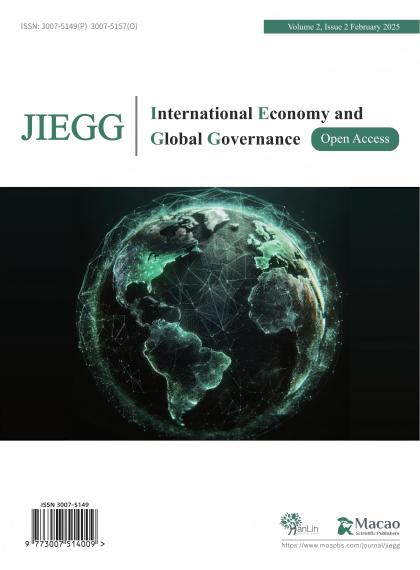-
Abdulaal, M., & Deen, A. (2024). The Discursive Strategies Used in Representing Refugees in the British News Media: A Critical Discourse Approach. World Journal of English Language. https://doi.org/10.5430/wjel.v15n3p103.
-
Adger, N., Paavola, J., Huq, S., & Mace, M. J. (2006). Fairness in adaptation to climate change. MIT Press.
-
Bailey, A., Giangola, L., & Boykoff, M. T. (2014). How grammatical choice shapes media representations of climate (un)certainty. Environmental Communication, 8(2), 197–215. https://doi.org/10.1080/17524032.2014.906481
-
Bankoff, G. (2001). Rendering the world unsafe: ‘Vulnerability’ as Western discourse. Disasters, 25(1), 19–35. https://doi.org/10.1111/1467-7717.00159
-
Barnett, J., & Adger, W. N. (2003). Climate dangers and atoll countries. Climatic Change, 61, 321–337.
-
Bell, A., & Garrett, P. (Eds.). (1998). Approaches to media discourse. Blackwell.
-
Bravo, M. (2009). Voices from the sea ice: The reception of climate impact narratives. Journal of Historical Geography, 35, 256–278.
-
Cherry, M. V., & Flanagan, O. (Eds.). (2018). The moral psychology of anger. Rowman & Littlefield.
-
Cooper, S., Olejniczak, E., Lenette, C., & Smedley, C. (2017). Media coverage of refugees and asylum seekers in regional Australia: A critical discourse analysis. Media International Australia, 162(1), 78–89. https://doi.org/10.1177/1329878X16667832
-
Dun, O., & Gemenne, F. (2008). Defining environmental migration. Forced Migration Review, 31, 10–11.
-
Eklundh, E. (2019). Emotions, protest, democracy: Collective identities in contemporary Spain. Routledge.
-
Farbotko, C. (2010). “The global warming clock is ticking so see these places while you can”: Voyeuristic tourism and model environmental citizens on Tuvalu’s disappearing islands. Singapore Journal of Tropical Geography, 31, 224–238.
-
Farbotko, C., & Lazrus, H. (2012). The first climate refugees? Contesting global narratives of climate change in Tuvalu. Global Environmental Change, 22(2), 382–390.
-
Felli, R., & Castree, N. (2012). Neoliberalising adaptation to environmental change: Foresight or foreclosure? Environment and Planning A: Economy and Space, 44(1), 1–4.
-
Foucault, M. (1972). The archaeology of knowledge and the discourse on language. Harper & Row.
-
Hartmann, B. (2010). Rethinking climate refugees and climate conflict: Rhetoric, reality and the politics of policy discourse. Journal of International Development, 22(2), 233–246.
-
Kelman, I. (2010). Hearing local voices from Small Island Developing States for climate change. Local Environment, 15(7), 605–619.
-
Krzyżanowski, M. (2020). Discursive shifts and the normalisation of racism: Imaginaries of immigration, moral panics and the discourse of contemporary right-wing populism. Social Semiotics, 30(4), 503–527. https://doi.org/10.1080/10350330.2020.1766199
-
Laclau, E. (2007). On populist reason. Verso.
-
Laclau, E., & Mouffe, C. (2001). Hegemony and socialist strategy: Towards a radical democratic politics (2nd ed.). Verso.
-
Lea, N., & Lynn, S. (2003). “A phantom menace and the new apartheid”: The social construction of asylum-seekers in the United Kingdom. Discourse & Society, 14(4), 425–452. https://doi.org/10.1177/0957926503014004002
-
Martin, J. R., & White, P. R. R. (2005). The language of evaluation: Appraisal in English. Palgrave Macmillan.
-
Nussbaum, M. C. (2013). Political emotions: Why love matters for justice. Harvard University Press.
-
Oliver-Smith, A. (2002). Theorizing disaster: Nature, power, and culture. In S. M. Hoffman & A. Oliver-Smith (Eds.), Catastrophe and culture: The anthropology of disaster (pp. 23–48). School of American Research.
-
Parker, S. (2015). “Unwanted invaders”: The representation of refugees and asylum seekers in the UK and Australian print media. Media, Culture & Society, 37(3), 313–329.
-
Randall, A. (2013, May 17). Where is the dignity in that. The Guardian. https://www.theguardian.com
-
Salmela, M., & von Scheve, C. (2017). Emotional roots of right-wing political populism. Social Science Information, 56(4), 567–595.
-
Salehyan, I. (2008). From climate change to conflict? No consensus yet. Journal of Peace Research, 45(3), 315–327.
-
Solomon, T. (2015). The politics of subjectivity in American foreign policy discourses. University of Michigan Press.
-
Vollmer, B., & Karakayali, S. (2017). The volatility of the discourse on refugees in Germany. Journal of Immigrant & Refugee Studies, 16(1–2), 118–139. https://doi.org/10.1080/15562948.2017.1288284
-
Wodak, R., & Meyer, M. (2009). Critical discourse analysis: History, agenda, theory, and methodology. In R. Wodak & M. Meyer (Eds.), Methods for critical discourse analysis (pp. 1–33). Sage.
-
Yılmaz, F., Elmas, T., & Eröz, B. (2023). Twitter-based analysis of anti-refugee discourses in Türkiye. Discourse & Communication, 17, 298 - 318. https://doi.org/10.1177/17504813231169135.
-
Zhang, D. D., et al. (2007). Global climate change, war, and population decline in recent human history. Proceedings of the National Academy of Sciences, 104(49), 19214–19219.
-
Çetin, C., & Gürelli, M. (2024). Narratives of Securitization: Media Portrayals of Refugees in Türkiye During Election Periods. İletişim Kuram ve Araştırma Dergisi. https://doi.org/10.47998/ikad.1468819.

